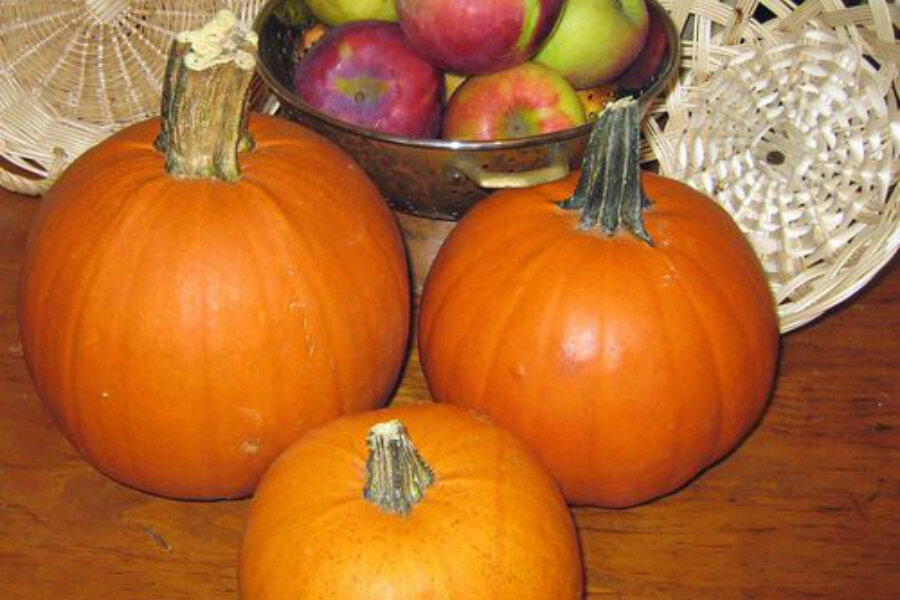Preparing the pumpkin:
Cut a sugar pumpkin in half and scoop out the seeds. Place each half, flesh side down, on a jelly roll baking pan (cookie sheet with sides); add 1 cup of water and bake at 400 degrees F. for about 30 minutes or until a fork can pierce the flesh and it comes away from the skin easily. When the pumpkin is cool enough to handle, scrape the flesh away from the skin and puree it in a food processor.
Crust for one pie:
(Use your favorite recipe, a store-bought crust or the recipe below. Prepare the crust while the pumpkin is baking.)
Cut 1/3 cup butter into 1 cup flour and 1/4 teaspoon salt. Add 2-3 tablespoons water and mix quickly until the flour mixture is moist and clingy, but not too wet. Roll out the dough and place it into a 9-inch pie pan. Crimp the edges and prick the bottom and sides of the crust with a fork. (If you have a food processor, process the butter, salt and flour, then add the water and pulse a few more times.)
Pumpkin filling:
2 cups pureed sugar pumpkin
2 eggs
1/2 cup sugar
1/2 teaspoon salt
1 teaspoon cinnamon
1/2 teaspoon ginger
1/2 teaspoon nutmeg
1/4 teaspoon cloves
1 12-ounce can evaporated milk (fat free, 2%, or regular will all work)
1. By hand, beat together all the ingredients except the milk until the pumpkin is a uniform color.
2. Beat in the milk, still by hand, and pour the mixture into your crust.
3. Place in a 450 degree F. oven and bake for 15 minutes. Lower the heat to 350 degrees F. and bake for another 40-50 minutes until done. (You can test doneness by inserting a knife in the middle. If it comes out clean, the pie is ready.)
Read the full post on Stir It Up!








